For some of us, it’s been decades since the last time someone quizzed us on road signs. However, knowing the meaning behind the road signs you see on the side of the road is an essential part of being a responsible driver.
Failure to obey these signs can cost you money if you get a ticket and jeopardize the safety of you and others on the road.
Today, we’re looking at 10 road signs that you have to know if you want to be a good driver. While there are many more that we could add to the list, knowing these is a good place to start. Let’s dive in!
What Are Road Signs?
Road signs come in a variety of shapes, sizes, and colors. You’ll see them along roads and highways anywhere you drive. They communicate important information that can help drivers follow the law, avoid getting lost, and perform various other useful tasks.
Why Are Road Signs Important?
Road signs are vital because they help communicate changes in road conditions, speed limits, or any upcoming hazards. Failure to pay attention to these signs can be reckless. Reckless behavior while driving typically means it’s only a matter of time before someone gets seriously hurt or even killed.
Safety while driving is one thing that should never get overlooked. The National Highway Traffic Safety Administration (NHTSA) reports that more than 40,000 people died in motor vehicle accidents in 2021, which is a 10% increase from 2020.
While various factors can cause serious motor vehicle accidents, drivers ignoring information on road signs is one of the leading factors. Road signs often communicate important information and reminders that can improve safety while on the road.
Why Do Road Signs Use Symbols?
Using symbols instead of words helps to reduce the chances of any miscommunications. Sometimes a picture is worth a thousand words. Using symbols and pictures can more clearly communicate the information than trying to squeeze words onto a sign.
Symbols are beneficial for those who can’t read or speak English. Many signs are relatively similar from one country to the next, which makes it easy to know what information the sign is trying to communicate. You don’t have to speak the language to know what a stop sign looks like.
What Are the Eight Shapes of Road Signs?
While there are a tremendous amount of signs that communicate various information, they typically fall into one of eight shapes. Those shapes are octagons, triangles, rectangles, diamonds, pentagons, circles, and pennants. Anytime you see one of these signs, you should note it, especially if you’re driving in an unfamiliar area. These signs can help you reduce speed, avoid missing your exit, and much more.

10 Road Signs You Must Know
There are many more road signs you should know, but we feel these are the 10 most important. Let’s take a look at how to identify these signs and what they mean.
Stop Sign
Stop signs are red octagons that have white letters and white trim. As you might guess, these signs indicate that drivers must stop. You’ll typically see these at intersections or in areas where stopping will help increase the safety of drivers and pedestrians.
A painted white line on the road often accompanies these signs. Drivers should come to a complete stop before proceeding through the intersection. A rolling stop is not a complete stop. Law enforcement can issue a citation if you do not come to a complete stop.
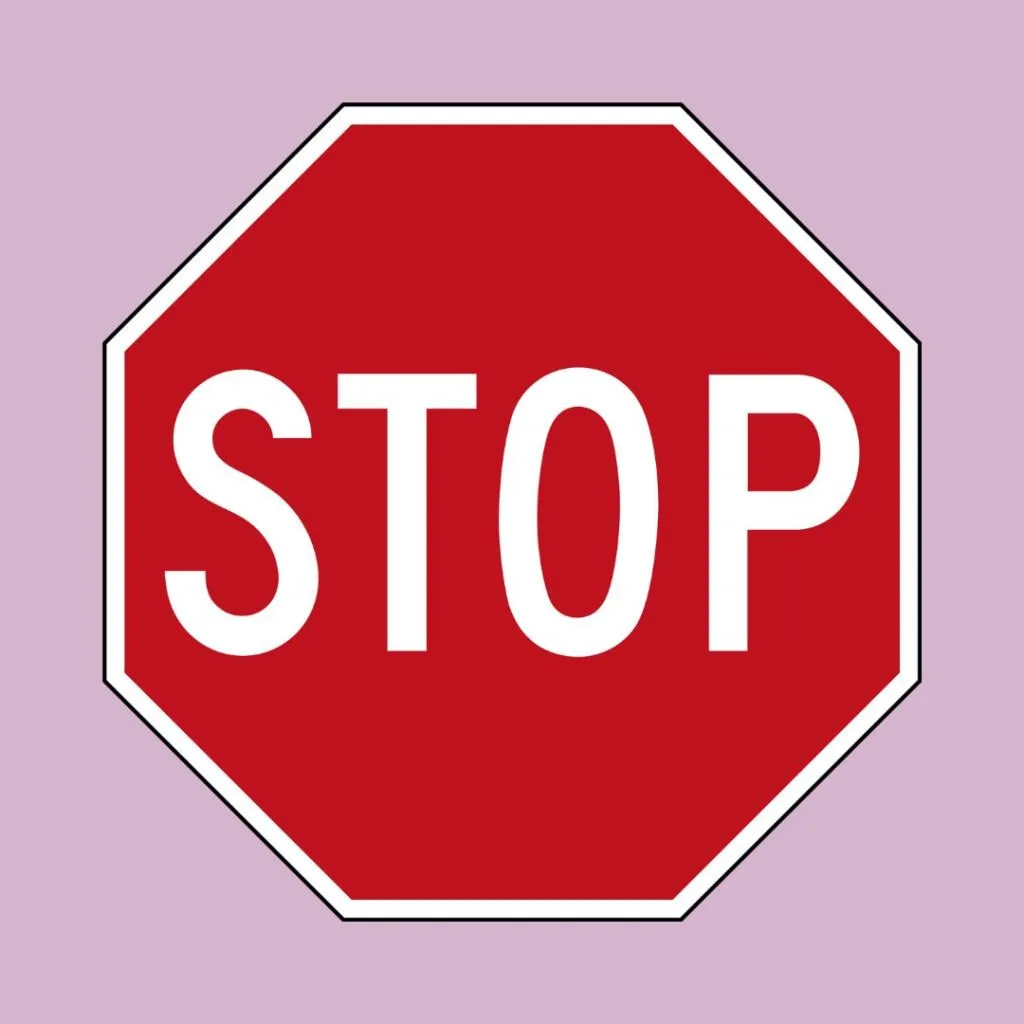
Speed Limit Sign
Speed limit signs have a white background with black letters. These are regulatory signs that communicate the maximum speed vehicles should be traveling. While many drivers drive at least a few miles per hour over the speed limit, they’re technically breaking the law.
While law enforcement will likely look the other way for drivers going a few miles per hour over the speed limit, that’s not always the case. If they’re looking for a reason to stop a vehicle, exceeding the speed limit by a mile an hour or two is a sufficient reason to stop them.

Yield Sign
A yield sign looks similar to a stop sign but is a triangle. It has red letters, a white backing, and a thick red trim that outlines it. These signs indicate that drivers should yield to oncoming traffic.
Drivers aren’t required to come to a complete stop if there is no traffic.
However, they don’t have the right of way and must allow other vehicles to pass.
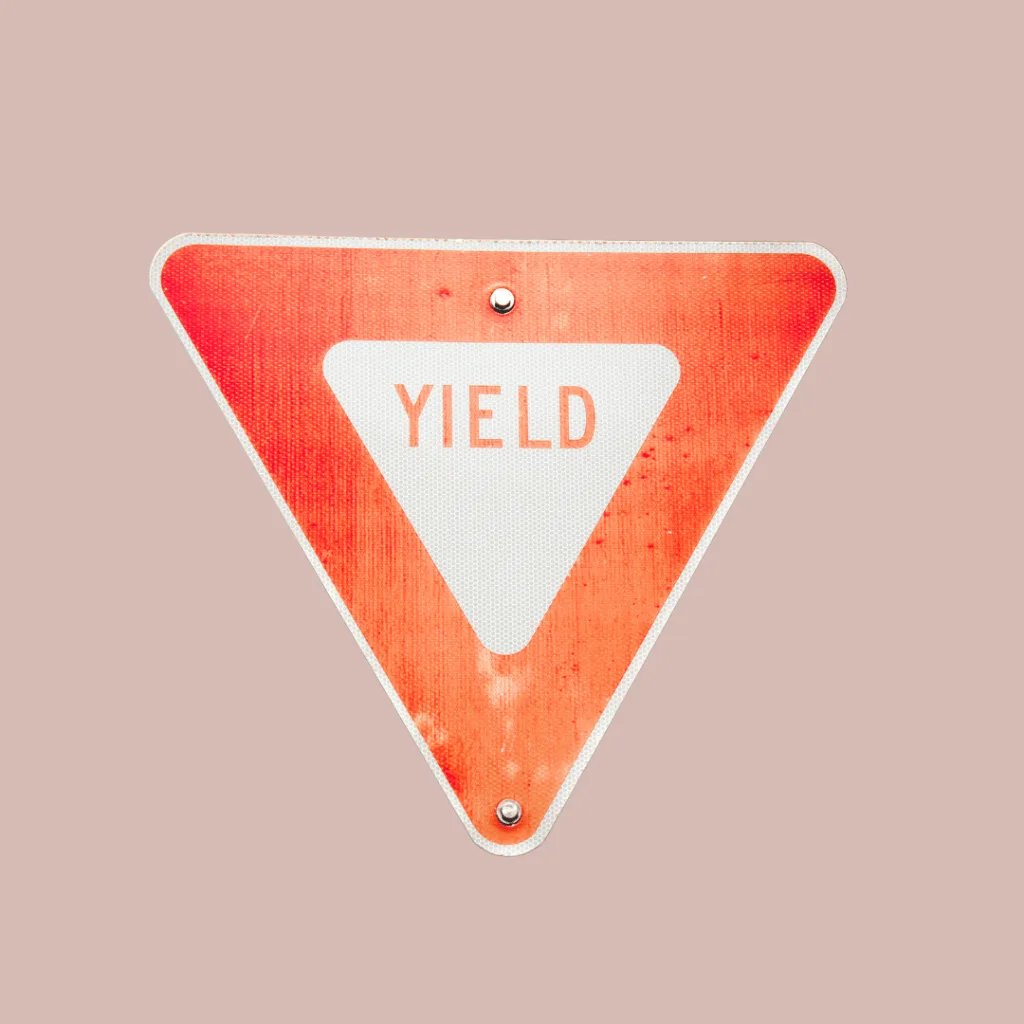
Low Clearance Sign
Low clearance signs are typically diamond shapes but can also be rectangles. The diamond-shaped signs have a yellow background with black lettering and black trim.
These signs have two black arrows that point to the ground and sky with the height of the low clearance a driver is approaching. For most passenger vehicles, this isn’t going to be a problem. However, if you’re towing a trailer or driving a taller vehicle, this is essential information you’ll want to know.
Pro Tip: Before you head out on the highway, make sure you know these 10 Unwritten Rules for Highway Driving.
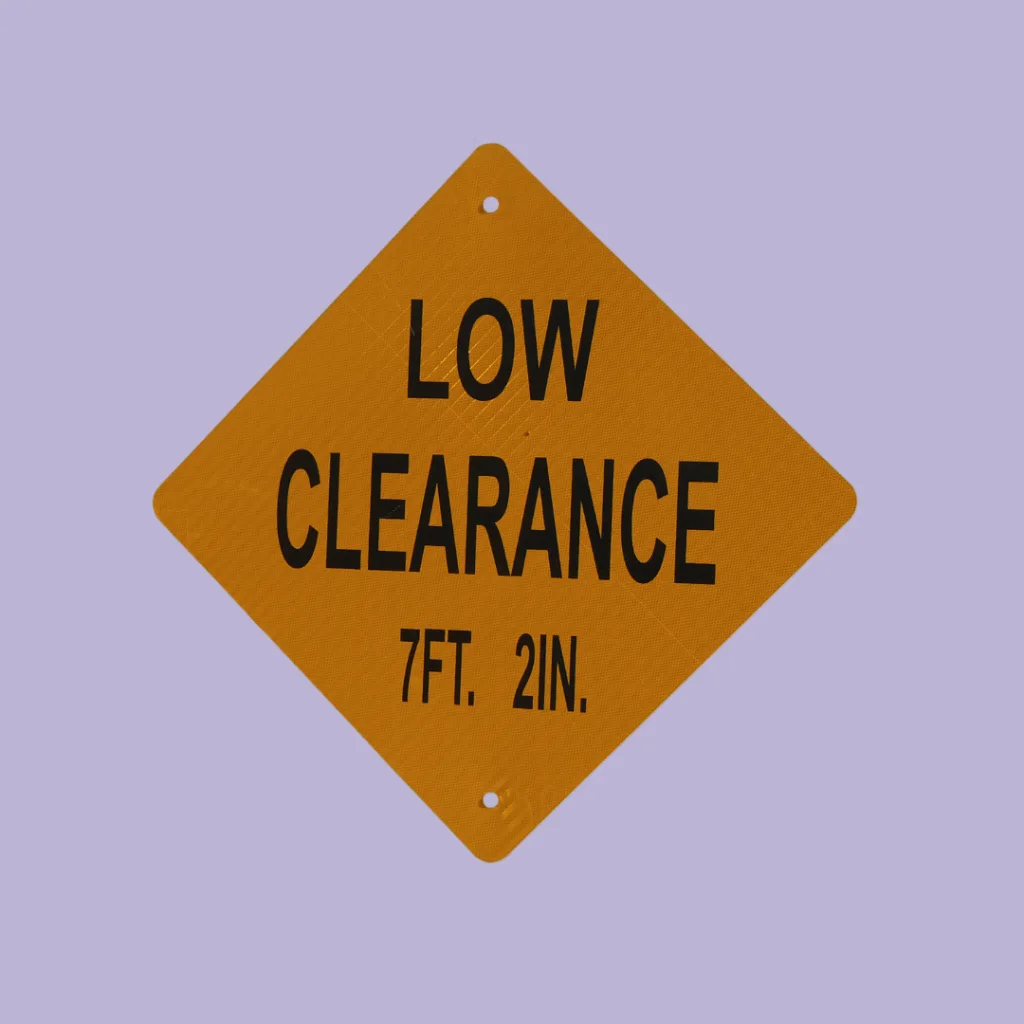
Keep Right Sign
A keep right sign is a regulatory sign with a white background and black lettering. The most common keep right sign features a black arrow showing a curvature in the road going to the right of an object.
This is important to know, as drivers should be aware of any upcoming lane shifts due to roadway features or obstruction. It could be a divide in the highway or other structures.
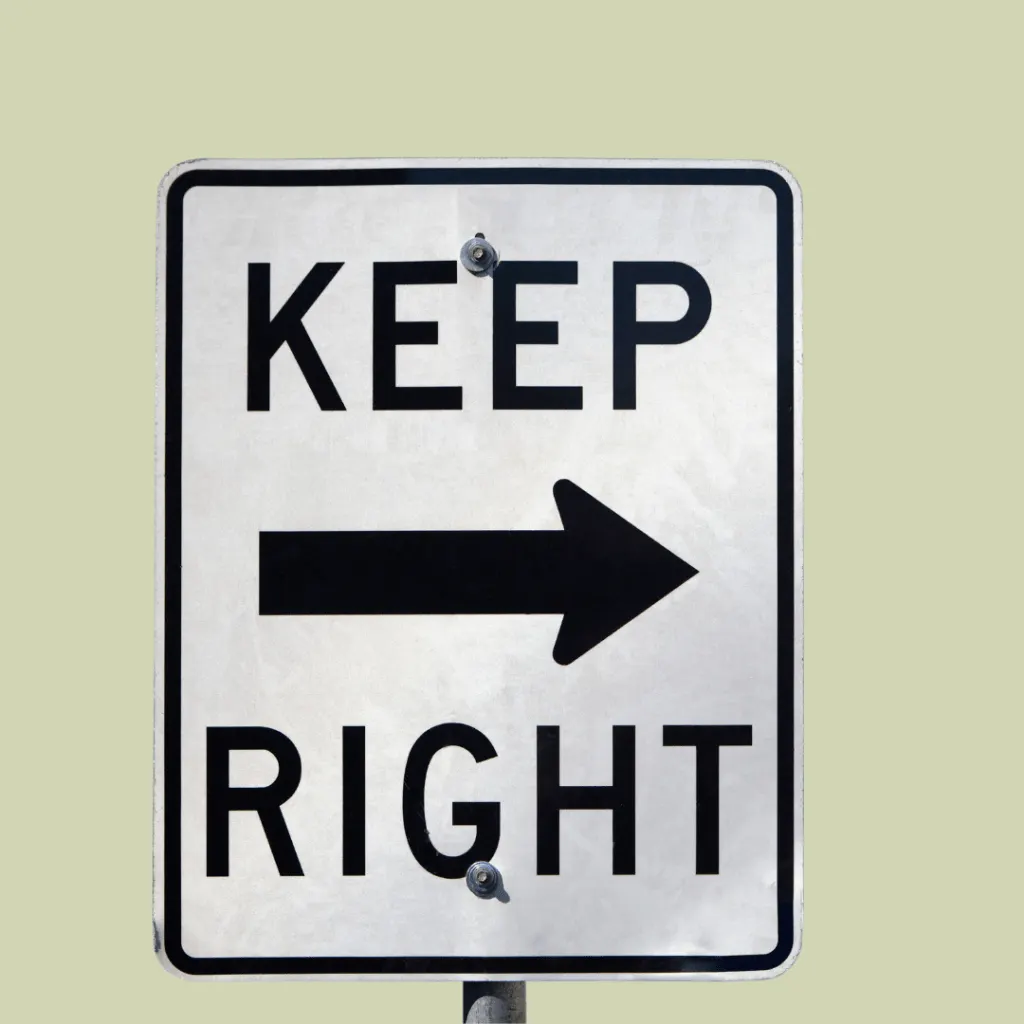
No U-Turn Sign
A no U-turn sign is a sign that you’ll typically see at road intersections. It has a white background with a black arrow in the shape of the letter U. In addition, it has a red circular cross that indicates the particular types of prohibited turns.
Many cities and states restrict U-turns in areas where performing the driving maneuver would not be safe. Like many other road signs, ignoring no U-turn signs can lead to a citation. Do yourself a favor, find a safe place to make your U-turn, and keep as much money in your pocket as possible.
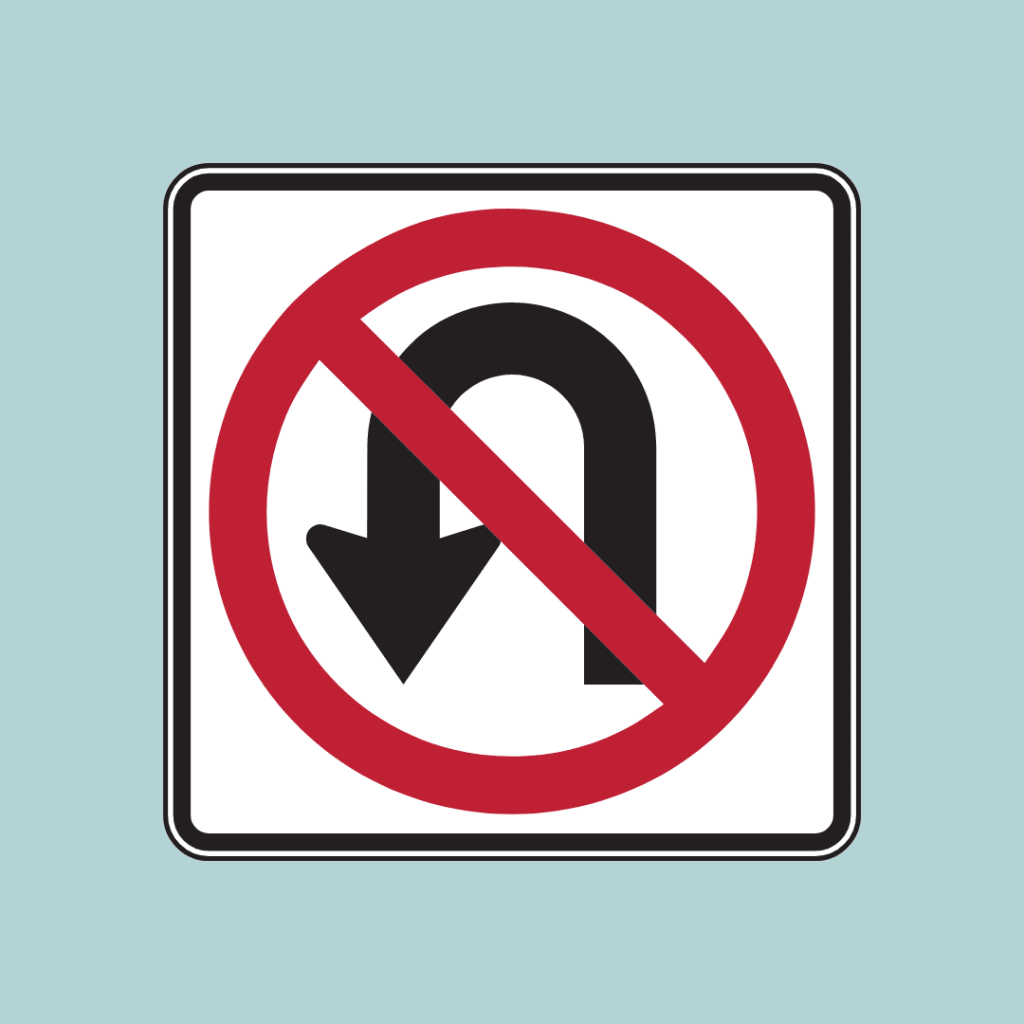
No Passing Zone
No passing zone signs are pennant-shaped signs. They have a yellow background, black lettering, and black trim. These signs help drivers to know that they’re driving in an area where it is not safe to pass vehicles. These are very common on two-lane highways where drivers can easily be frustrated by slower-moving traffic.
These signs will often correspond with the yellow lines on the highway that indicate whether a driver can legally pass in an area or not. Passing in a no-passing zone is extremely dangerous and something no driver should do.
Men at Work Sign
If you see an orange diamond-shaped sign with a picture of a person shoveling, it means there are men (and women, too) working ahead of where you’re driving. These signs can also state “Men Working” in large block letters.
If you see one of these signs, you should watch your speed and look for the workers. Speeding in these areas can result in extremely expensive tickets that could drastically increase your insurance premiums.
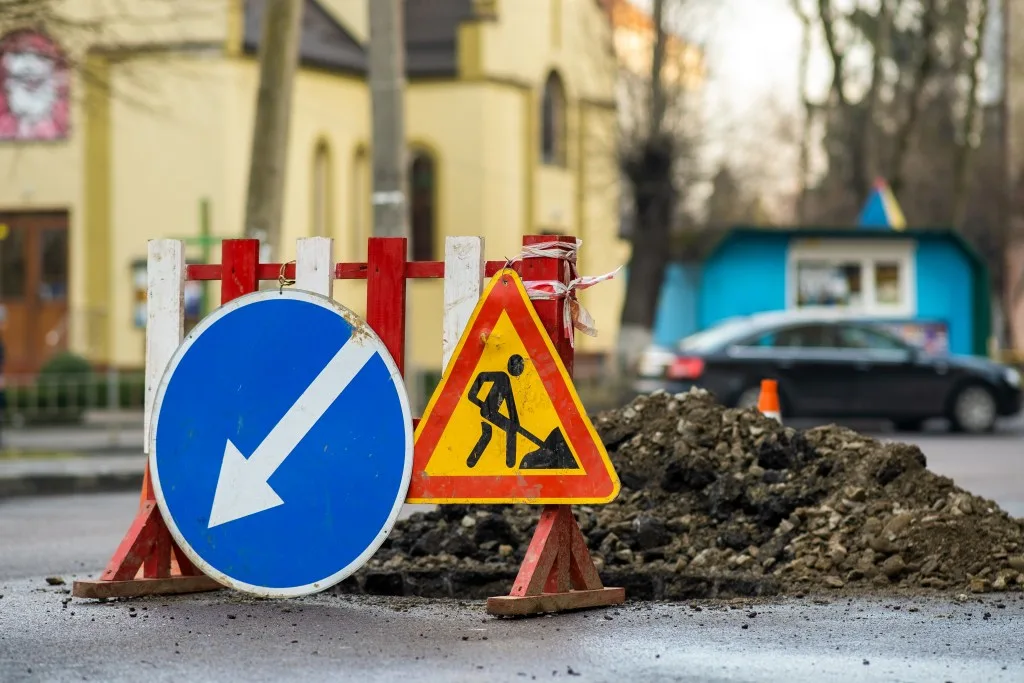
Hill/Hill with Grade
If you’re driving in a hilly or mountainous area, you’re likely to see signs warning that you’re approaching a hill or a road with a grade. These are typically diamond-shaped signs with pictures of a truck going downhill. In areas with extreme hills or grades, the signs will include the grade percentage and sometimes how long to expect it to last.
If you’re hauling a trailer or are in a large vehicle, you’ll want to adjust your driving. You don’t want to start applying the breaks until you’ve gained too much speed. If your vehicle has an exhaust or engine brake, use it. This will help ease the load put on your brakes and avoid experiencing a brake failure due to overheating them.
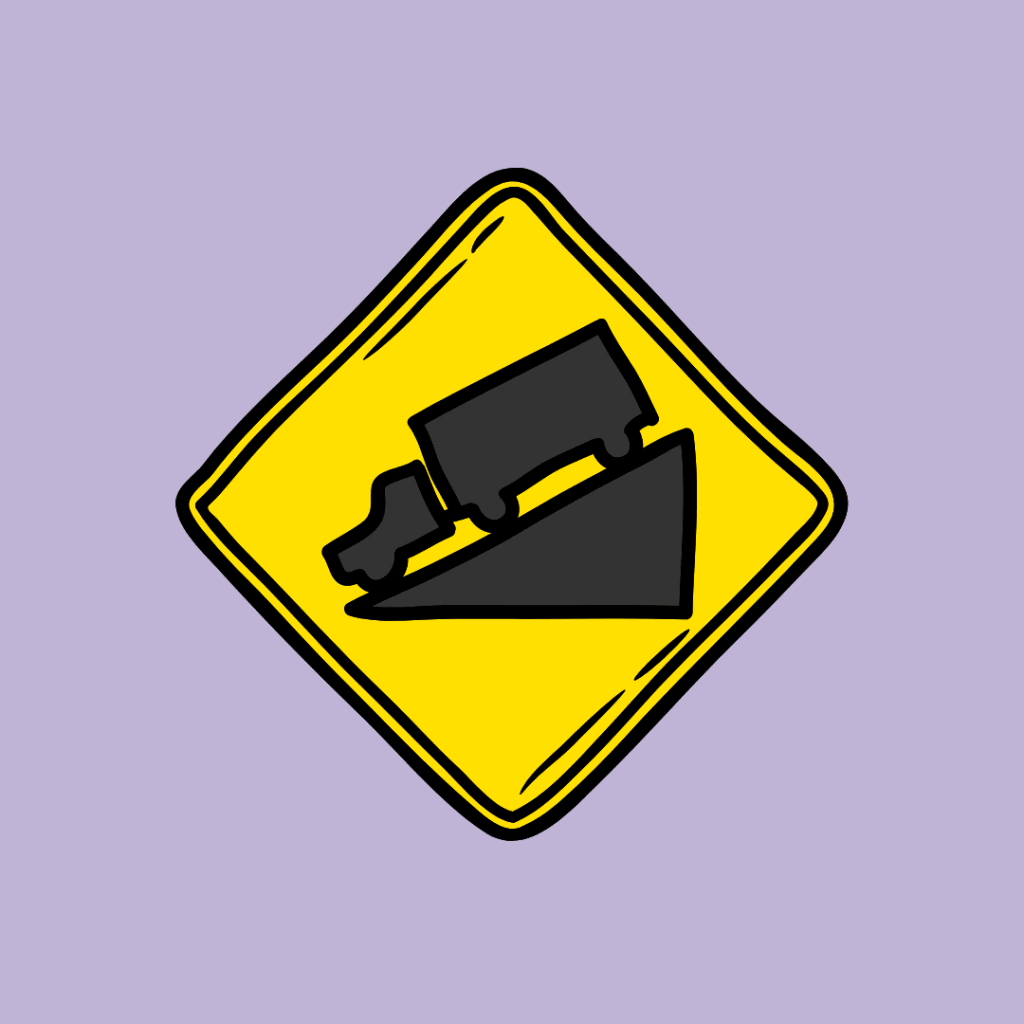
Sharp Curve
Sharp curve signs are yellow rectangles with a thick black arrow pointing in the direction drivers will need to turn. You’ll also often see yellow diamond-shaped signs with black text that reads “Sharp Curve Ahead.” They may even include a recommended speed for safely navigating the curve.
Ignoring these signs can be extremely dangerous. It could lead to drivers being unable to safely navigate a turn or possibly even rolling their vehicle on its side. If you’re traveling on a winding road, look for these signs.
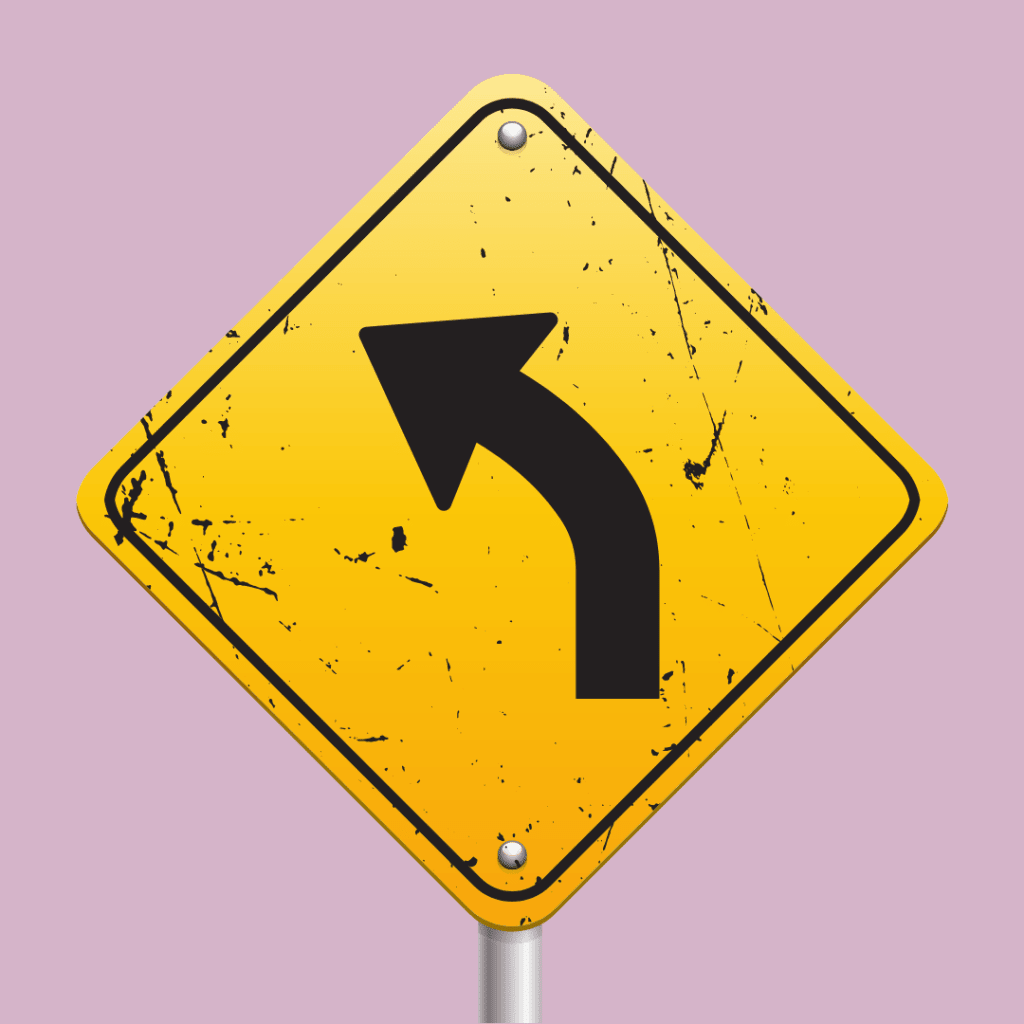
School Zone Sign
School zone signs are pentagon-shaped signs with a yellow or neon green background and black symbols. The symbols on these signs show two people walking while carrying a bag. There will typically be a rectangular sign below it that reads “school zone.”
These are critically important signs drivers should be mindful of watching for, especially when driving during hours at the start and end of school. Drivers should expect reduced speed limits and be mindful that children could be crossing the road. Fines for speeding in these areas can be extremely hefty, and there’s likely no chance of talking yourself out of receiving a ticket with most officers.
Pro Tip: Avoid doing any of these 5 RV Driving Habits That Make People Instantly Dislike You.
Know and Follow Road Signs
Just because you’re not getting quizzed anytime soon doesn’t mean you shouldn’t make sure you’re familiar with your road signs. However, simply knowing road signs isn’t enough. You should also make sure that you’re following them. Road signs are there to help keep both drivers and pedestrians safe.
Discover the Best Free Camping Across the USA
To be honest with you, we hate paying for camping. There are so many free campsites in America (with complete privacy).
You should give it a try!
As a matter of fact, these free campsites are yours. Every time you pay federal taxes, you’re contributing to these lands.
Become a FREE CAMPING INSIDER and join the 100,000 campers that love to score the best site!
We’ll send you the 50 Best Free Campsites in the USA (one per state). Access the list by submitting your email below: